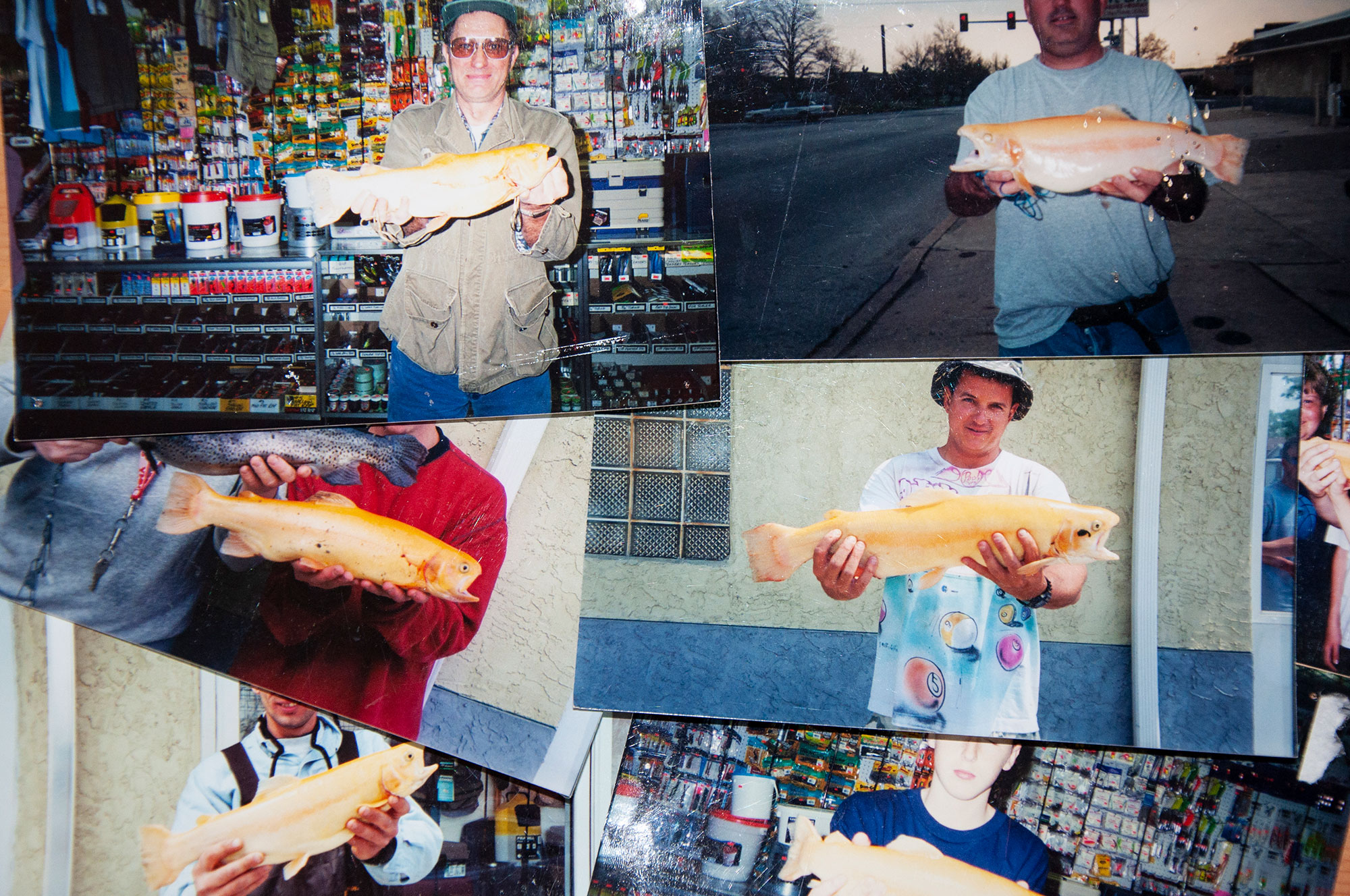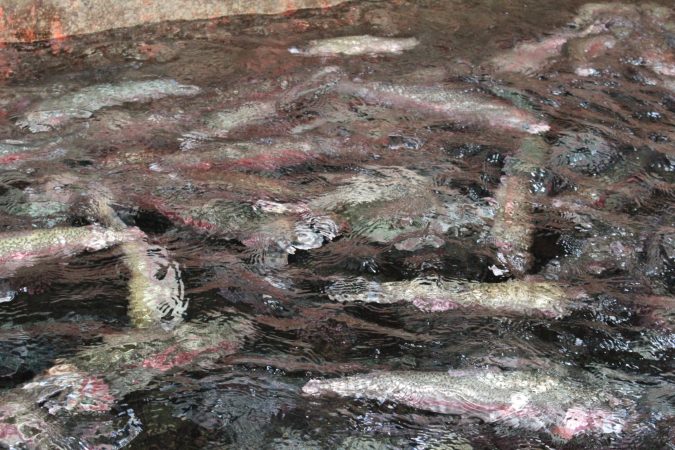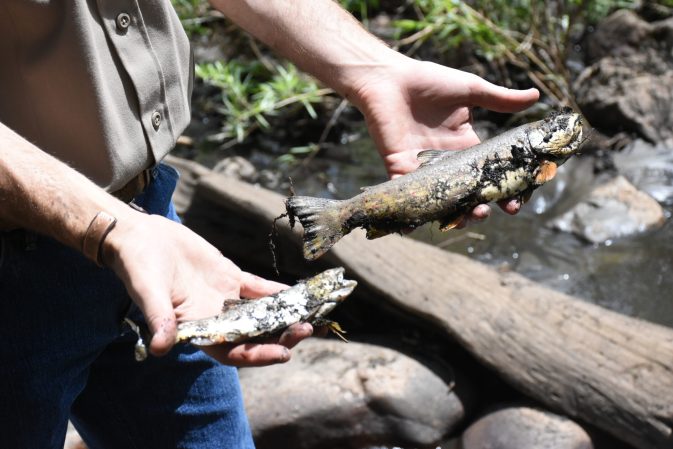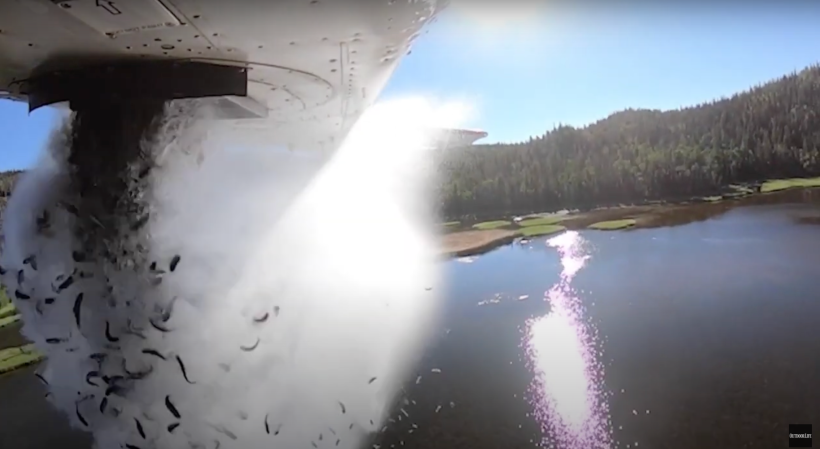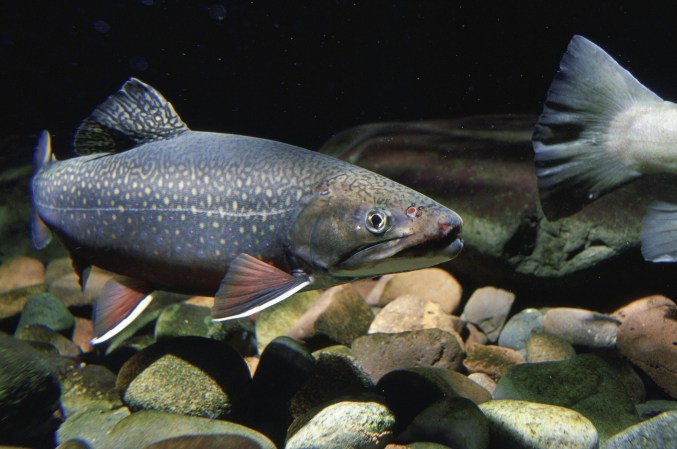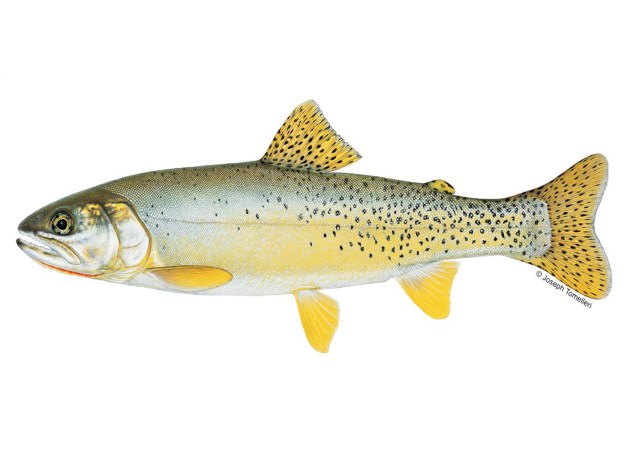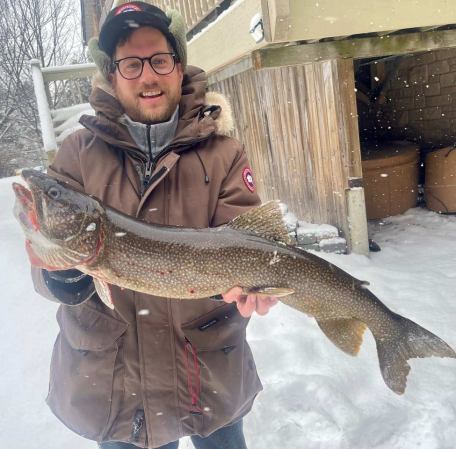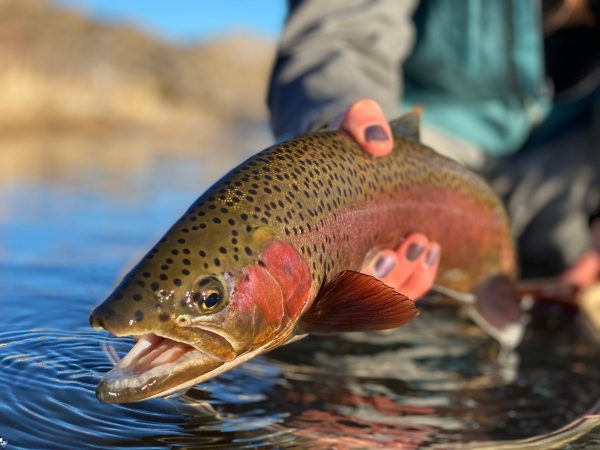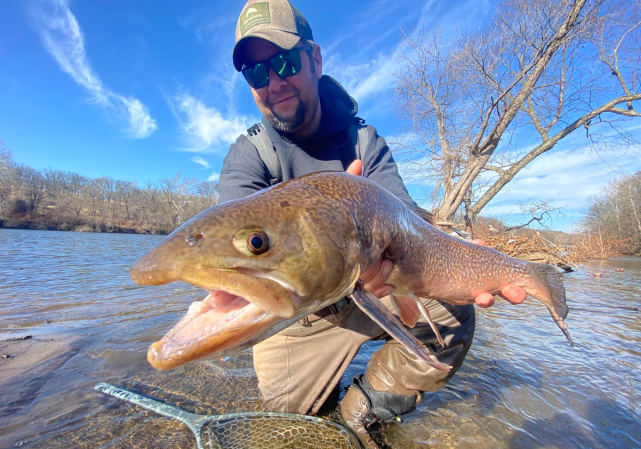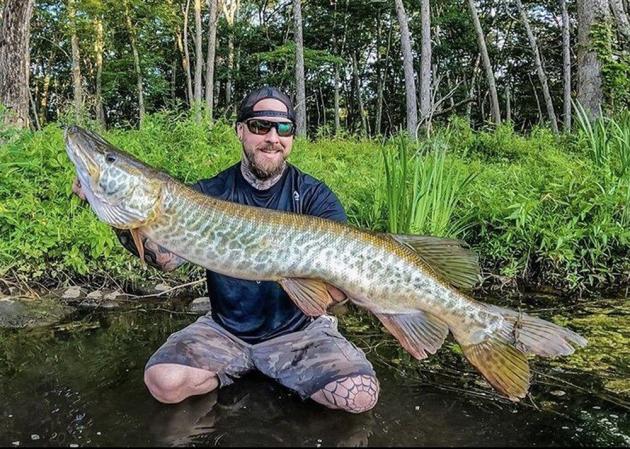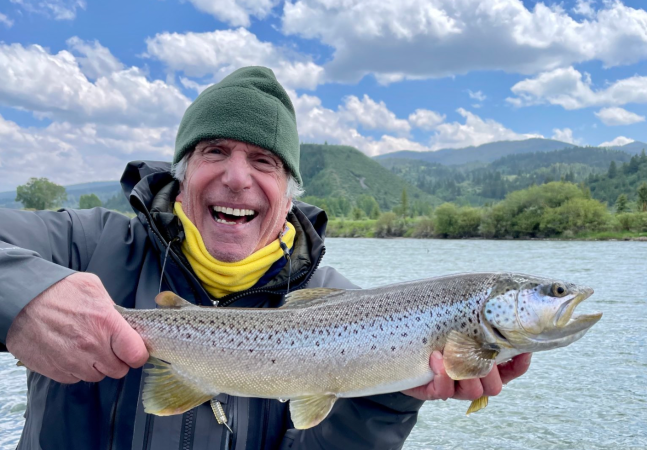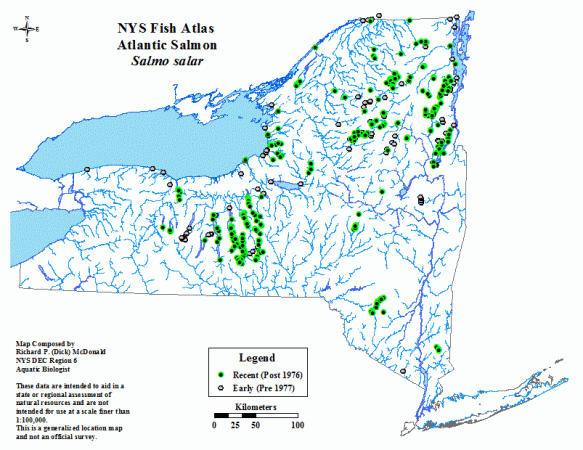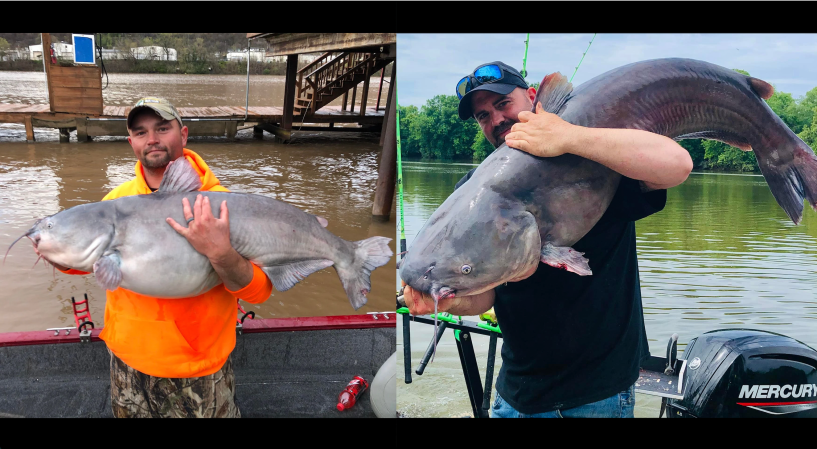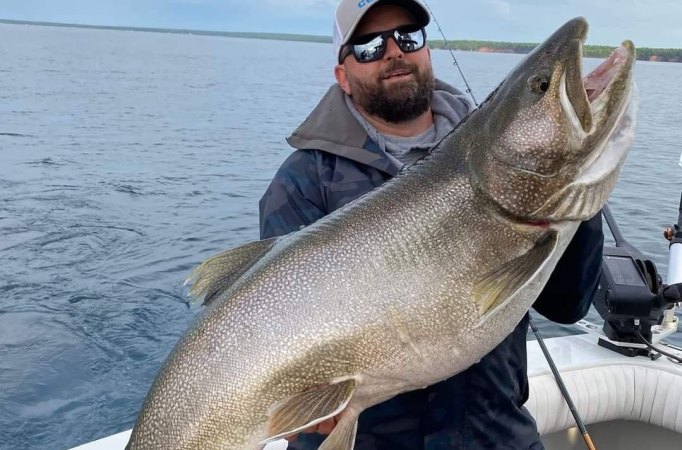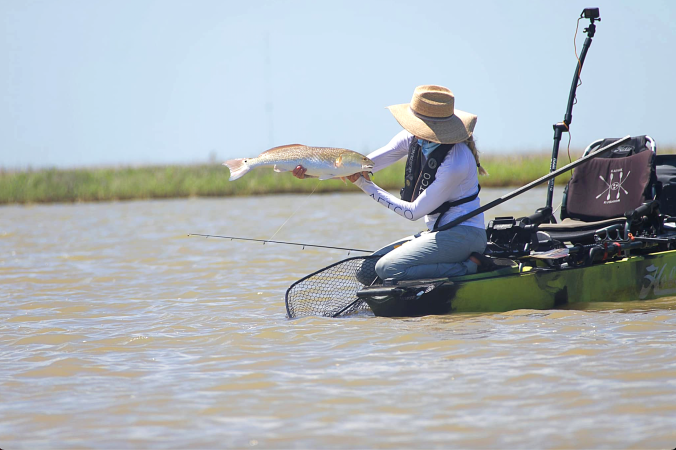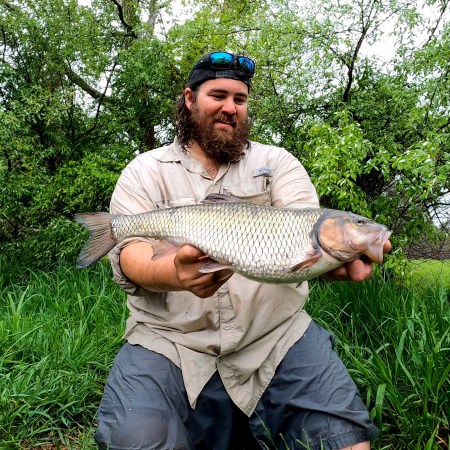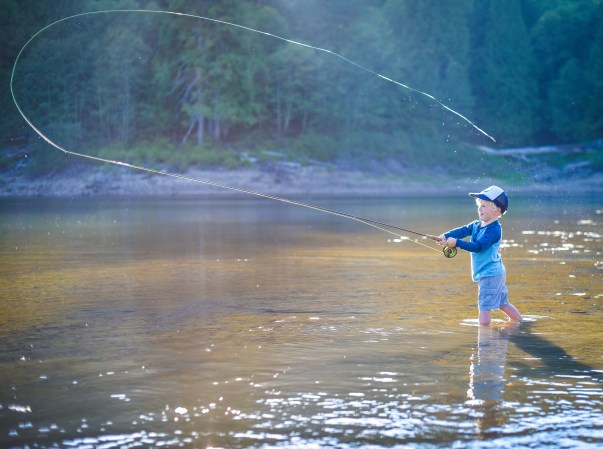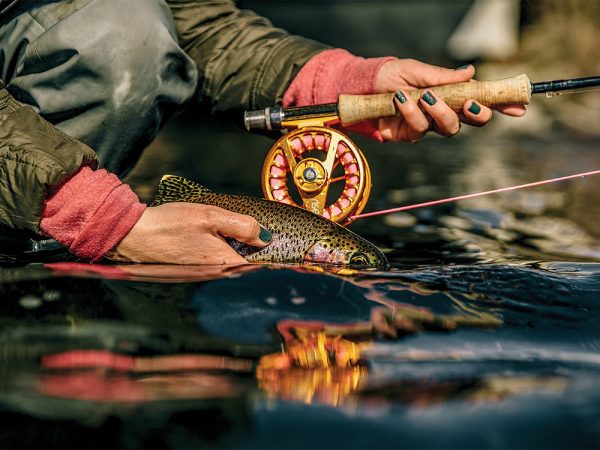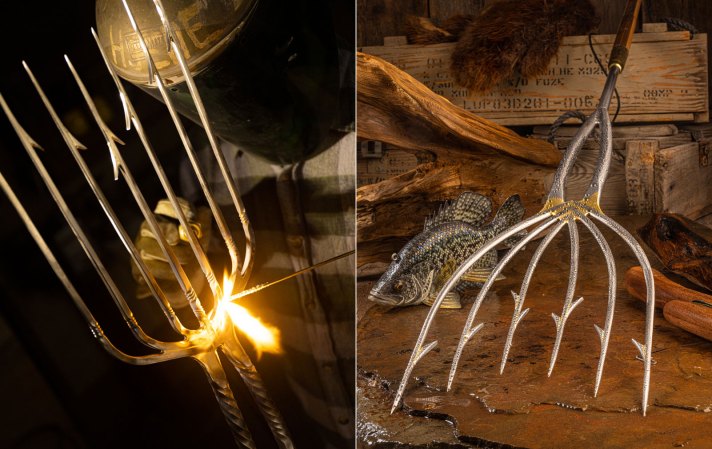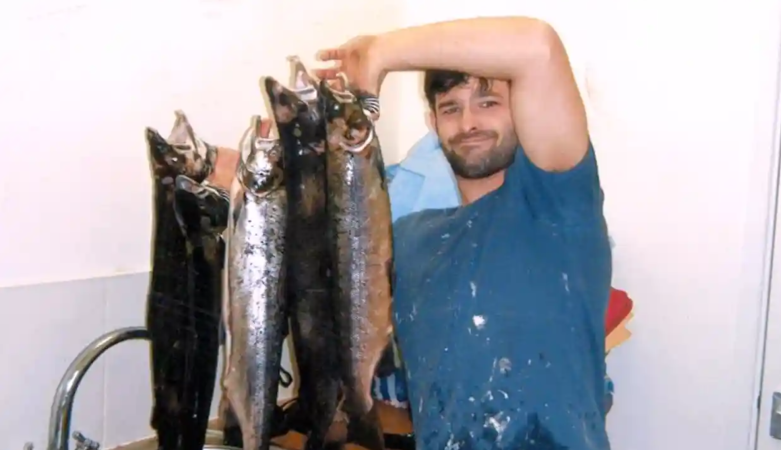A glorious joke. That’s the best way I can describe a palomino trout. Frequently referred to as “banana trout,” these bright orange mutants are the poster children for people who believe fishing for stocked trout is lame. The palomino trout is a hybrid cross of a rainbow trout and a California golden trout. It maintains its rainbow stripe, but it’s void of a dot pattern.
Regular stockers with their scarred fins and noses from concrete hatchery raceways are ugly enough, critics say. Why would you want to catch a fish that practically glows like a jack-o-lantern in the water? How much easier can you make trout fishing? I hear you loud and clear. I also know that most of these palomino trout haters are people who are lucky enough to live in wild trout country. But for some of us—myself include—catching these goofy circus peanuts separates the men from the boys, and in many cases, it takes more skill than you think. Granted, it’s a much different (and dirtier) skillset than you’d need on the Madison or Clark Fork, but sometimes you have to play rough to walk away with a big splash of orange on your stringer.
Country Palomino Trout Roads
The story of the palomino starts and sort of ends in West Virginia. While these fish are stocked in many states across the country including on the West Coast, nobody does “golden trout” like the Mountain State. In 1955, a hatchery in West Virginia successfully combined the common rainbow trout with the California golden trout. The result was the yellow-orange rainbow trout we know today as the palomino. It wasn’t first introduced into public waters, however, until 1963.
It surprises some folks to learn that a palomino is created by crossing two wild species of fish. Many assume it was made via laboratory DNA meddling to simply alter the color of a rainbow trout. Even more people believe palominos are albinos, which is incorrect. So, what prompted West Virginia to make its own gold trout? Well, it happens to be the state’s signature color.
I once got to talking about this with a buddy from West Virginia. He told me that palominos stemmed from the residents’ obsession with West Virginity University sports. The Mountaineer’s uniform colors are gold and blue, and my friend said, “believe me, if they could figure out how to make blue trout to go with them, they’d start stocking them, too.”
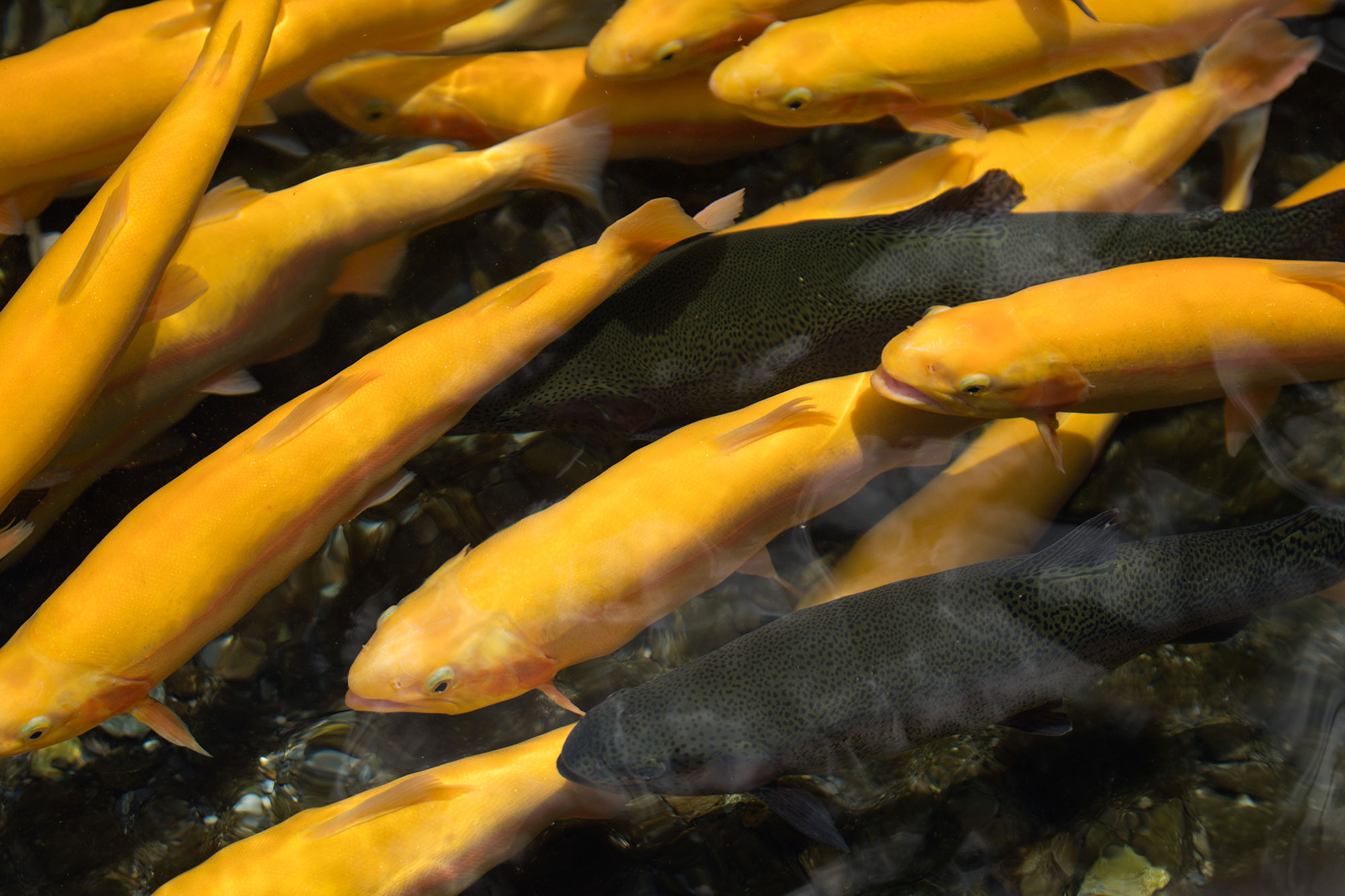
Ironically, blue trout do exist, but that’s another story for another time. For now, West Virginia is fine with just gold, and in 2023, the state stocked more than 50,000 palominos in lakes, streams, and ponds. It’s all part of the annual Gold Rush, an event that has been drawing thousands of anglers to the state every spring for the last six years. During the 12-day dash for banana trout, loads of prizes furnished by the state and private donors are up for grabs for tagged fish. According to one story on wvpublic.org, prizes this year include lifetime fishing licenses as well as free lodging within some of West Virginia’s state parks.
Clearly West Virginia has embraced the palomino. It could (or maybe should) be incorporated into the state flag. But this isn’t the only place where these fish are special, or where they can make you king for day.
How to Catch Palomino Trout
Palominos aren’t difficult to catch because they’re smart, but they can be difficult to catch because they’re scared. A bit of internet research tells me that unlike other hybrids, palominos can reproduce in the wild. They’re survival rates across the country, of course, is extremely low. These fish stick out like sore thumbs. Walk up on any bridge in New Jersey, Pennsylvania, New York, or Ohio during stocked trout season and there’s a strong chance you’ll spot one, even from a distance. Part of what makes these fish such an achievement in the stocker scene is their size. Because they’re highly visible to predators, there’s not much point in stocking little ones, so if you hook one, chances are it’ll be bigger than your average stocked rainbow or brown. This also explains why small wild ones wouldn’t last long with bigger fish, otters, mink, and hawks about. These fish may have lived a care-free, safe life in the hatchery, but they’re naturally on edge as soon as they’re stocked.
Here’s a common scene where I grew up trout fishing in the Northeast. There are five to 10 guys in waders clustered around the bridge hole on opening day, all casting to the middle. They’re focused. No one is talking. Chances are there’s a palomino bouncing around between them, and he or she who puts it in the net wins the hole. The poor fish has been bombarded with spinners, worms, and every color of Power Bait sold. It’s most likely that someone hooked it earlier and lost it, making it even more difficult to earn that second chance.
READ NEXT: Best Trout Lures
I’ve caught my share of palominos and been the big man in the parking lot because of it. What I’ve noticed over the years is that they’re often more aggressive than the other trout, but you must be the first person to get in front of it that day. You often get one shot, so if you want it bad enough, you’ll beat everyone else to the prime hole. You might have to ward off anyone else who approaches by saying you spotted a palomino up or down stream.
However, if you find yourself in the mix fighting for the fish that’s already on guard because someone else blew that first shot, here’s another hot tip: Walk away. I can’t tell you how many times in my life I’ve had good runs and holes to myself during spring trout season because everyone was so intent on scoring the orange one that they couldn’t walk away.
Likewise, if nothing else, a palomino is a fish finder—when you see one, don’t throw at it first. Assume there are ten other trout around it that you can’t see. Don’t settle for one circus peanut. Catch them all.

